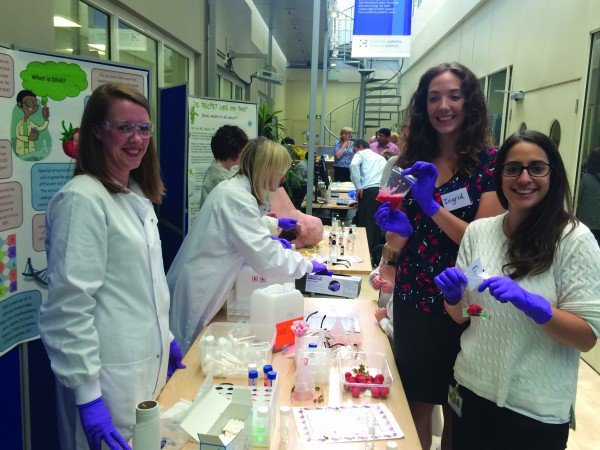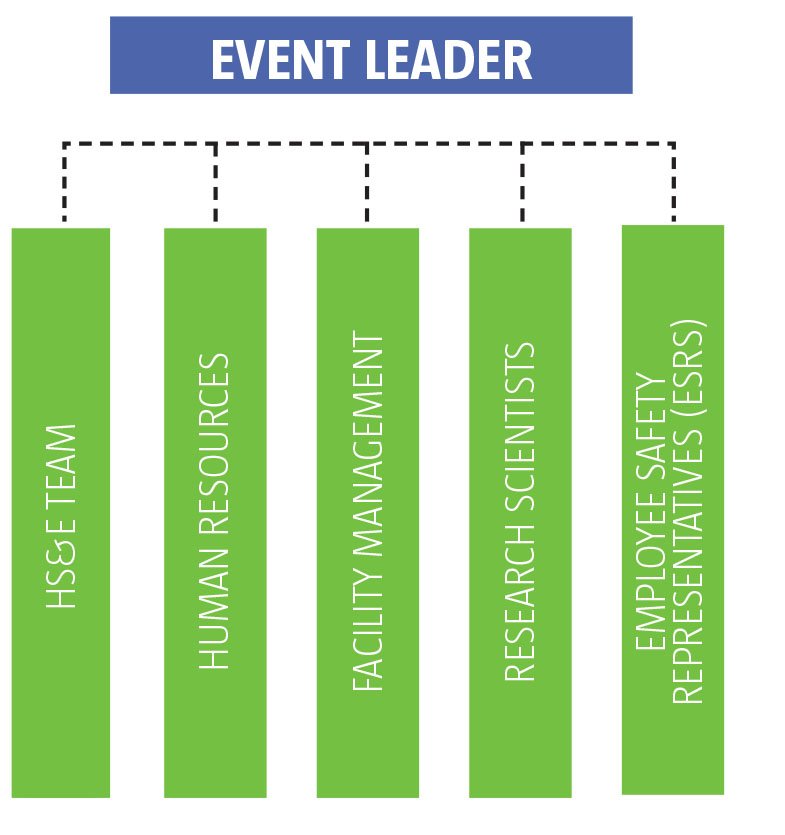 We often hear reports where health and safety is used as a reason to not undertake events. Claire Curtis describes how UCB broke this myth by hosting a high profile event in a challenging workplace.
We often hear reports where health and safety is used as a reason to not undertake events. Claire Curtis describes how UCB broke this myth by hosting a high profile event in a challenging workplace.
UCB is a global biopharmaceutical company that focuses on severe diseases in immunology and central nervous systems at the cutting edge of biopharmaceutical research at its Slough-based laboratories.
In summer 2015, the company announced that it would host an event for employees and families (including children) in the workplace, which would run alongside normal operations.
Dr Dawn Harper, presenter of TV programme Embarrassing Bodies attended the event, the aim of which was for families and children to have fun while experiencing what we do on a daily basis.
Furthermore, the company hoped the event would:
* Provide an insight into UCB’s values.
* Inspire children to learn more about science.
* Create an enjoyable and safe experience for all.
One of the greatest challenges the company faced was how to accommodate children on premises never designed to safeguard them from harm while at the same time providing an interactive and fun experience. Often the perception we see reported is how ‘health and safety’ prevents an activity from taking place but UCB was adamant that safety would be the tool that enabled it to succeed.
It was a great idea to host the event, but UCB needed to formulate a plan of action, decide the event scope, gain support from key stakeholders, and evaluate how this would impact on it and what new or additional systems/controls would need to be installed to ensure effective risk management on the day.
Planning
Drawing on HSE guidance [1], UCB first put together an effective action plan for managing the risks. The company formulated a planning committee (see graph) to ensure that members understood their legal responsibilities for criminal [2] and civil liabilities. [3,4] In particular the group was made fully aware of the higher duty of care required for hosting children on UCB’s premises.
 The scope of the day was agreed which included laboratory tours, children’s science experiments, face painting, a children’s entertainer and a barbecue. All of this needed to run alongside UCB’s normal operations while not putting anyone at any greater risk.
The scope of the day was agreed which included laboratory tours, children’s science experiments, face painting, a children’s entertainer and a barbecue. All of this needed to run alongside UCB’s normal operations while not putting anyone at any greater risk.
Challenges
With the event’s scope agreed it was time to start assessing the impacts this would have on the business, employees and for visitors coming into the workplace; create a safety plan [1] and risk assessment. [5]
A number of key challenges that needed serious consideration were identified. A list of these is highlighted below with an explanation of the controls that UCB implemented to reduce the level of risk ‘so far as reasonably practicable’ (SFARP).
- Safeguarding children in the workplace
As previously mentioned, UCB has a greater duty of care for children invited onto its work premises due to their naivety. [4] The greatest concern was the building’s stairs and balconies, which are insufficient to prevent small children falling from height. [6] To reduce the risk SFARP, the company planned for children to remain on the ground floor, which was controlled with signage, visitor information and supervision from volunteers.
Obviously, UCB’s laboratories were never designed with toddlers and children in mind. These areas possess a variety of different risks; hazardous substances, machinery, sharps and breakables.
The challenge here was, how could UCB arrange the laboratory tours with young children while normal research activities continued? By reviewing the risks and adopting a number of different controls, the company showed that this was indeed possible.
Controls adopted included restricting numbers on tours and using trained guides who led the group around a pre-planned route. High-risk activities were excluded from the tour route and hazardous substances, equipment and breakables were moved out of reach. Children’s lab coats, safety glasses and cover shoes were worn to protect from any accidental releases.
- Housing additional 350+ persons
UCB realised that its current arrangements for fire, first aid and emergencies were inadequate and would not be suitable for hosting 350+ visitors on site. As a result, all people attending the event were contained on the ground floor of the buildings and the company used a simple ‘fire sweep’ system with designated (trained) fire personnel to check these areas in the event of a fire evacuation. In response to the significant increased numbers, UCB doubled its first aid personnel on the day and issued them with armbands (to highlight their role to naïve visitors), first aid kits and mobile phones.
- Contractor selections
UCB enlisted help from external contractors to provide face painting and children’s entertainment. As both of the companies employed were small (less than five employees) they did not have and were not legally required to produce a written HSE policy or risk assessments.
This is an unusual situation for UCB and presented a challenge as the company wanted to ensure that it would be working safely and not exposing anyone to any risks. Through close liaisons with the contractors, the company was able to understand its ‘safe approach’ to its work activities and assist them in formalising their arrangements.
- Children’s science experiments
UCB’s goal was to encourage children to participate in experiments, where possible, while not putting them at risk. The company designed a number of fun experiments, most of which allowed the children to participate, and these included DNA extraction from strawberries, surface tension (using bubbles), simple chromatography (felt tip pens) and creation of dry ice bubbles (using liquid nitrogen).
By risk assessing the experiments, UCB was able to adequately control the risks SFARP through the introduction of competent supervision, procedures, participation allowed for all but where liquid nitrogen was used and PPE (children’s lab coats, safety glasses and gloves).
- STOP mechanism
It was important to identify a ‘stop mechanism’ over the three buildings in case of significant emergencies, which could impact the event (i.e. accidents, threat to business, activists). UCB used a mechanism to communicate to all volunteers through its security team who would in turn liaise with the duty manager and support teams and instigate its crisis management plan.
Lessons learned
The event was a huge success with feedback revealing the majority of participants had a great time and a safe experience, with some children demonstrating a keen interest in studying science in the future. No one was harmed as a result of the event (no first aid cases, near misses or accidents). The event planning committee monitored the safety controls throughout the day ensuring they remained suitable and sufficient through dynamic risk assessments and constant communication.
However, on evaluation UCB determined that the risk of young children accessing the upper floors and open balconies could be improved. As the controls implemented were all human based, the company felt these could be further improved due to the potential risk of a child falling from height. Consequently, before any future events take place, physical changes will be made to the stairs and balconies in line with current regulations. [6]
In conclusion, UCB has shown that controlling risks in the workplace is always a balancing act especially when introducing a new set of risks into the mix. We must always consider what can be done or changed to enable things to happen rather than dismissing them straight away.
References
- Running an event safely (HSE) http://www.hse.gov.uk/event-safety/running.htm
- 2. HSWA 1974, sections 2 and 3
- Donoghue v Stevenson 1932
- Occupier Liability Act 1957
- Management of Health and Safety at Work Regulations 1999 – regulation 3
- British Regulations 2000, Part K, Protection from Falling, Collision and Impact
Claire Curtis is senior health and safety advisor at UCB
What makes us susceptible to burnout?
In this episode of the Safety & Health Podcast, ‘Burnout, stress and being human’, Heather Beach is joined by Stacy Thomson to discuss burnout, perfectionism and how to deal with burnout as an individual, as management and as an organisation.
We provide an insight on how to tackle burnout and why mental health is such a taboo subject, particularly in the workplace.



